
It Only Looks Like A Box Camera
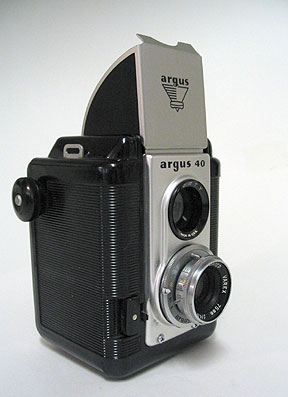
Actually, it looks like a number of other Argus twin lens cameras,
but it's got a little something that sets it apart.
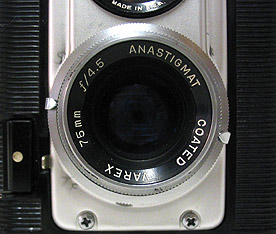
It's this little thing right here. No, it's not a Tessar type,
but a
well put together triplet that keeps things very sharp in the centers,
with respectable snap in the corners. It's coated, as you can
see, but
like a lot of old triplets it's just a little low in contrast.
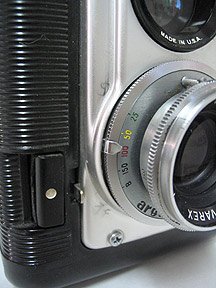
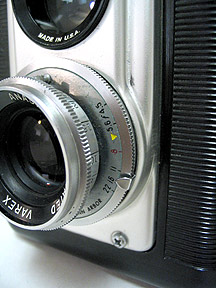
Shutter speeds (left) are limited
from 1/25 to 1/150 in four steps, plus "B".
The stutter is the button with
the white dot. It self cocks when you wind the film, and
you can
cock it independent of film winding with the little lever by the
shutter button.
That means you can make double exposures if you
like. Great for those "high art" shots.
There is just
enough range here to use films with speeds up to asa 400 with just a
touch
of over exposure for 400 film on bright days. The aperture
range (right) is from f4.5 to f22.
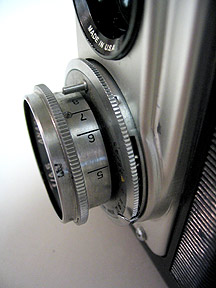
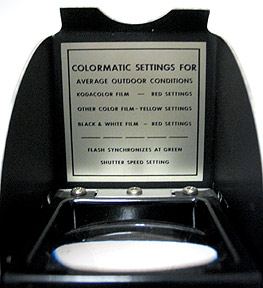
It's a zone focus lens, and you can see the focus scale at left.
Minimum is a pretty close 3.5 feet. Just like the big boys!
Inside the viewing hood (right) are instructions for films of the
day.
The settings on the lens, shutter, and aperture are color
coded for the films listed here.
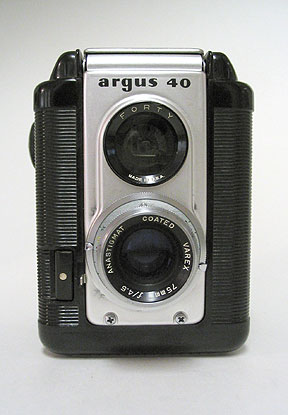
Here's one more shot of the front. With the focusing hood
closed it's a compact package. From what I can find out, this was
the
first type in this style of Argus bakelite bodies. At first it
was called an
Argoflex 40, then they changed the name to Argus 40, but it was the same
camera. After that came a downgrade that looked just
like this camera
except for the lens, called the
Argus
super
Seventy-five. A few years later
they lost the super, and it was just the Argus Seventy-five. Most
manufacturers
work their way up. Argus went the other way. This particular
Argus was built in 1954. Many of these have a date stamped inside.
This camera takes 620 film, but it's easy to re-roll from 120. I
rolled up some Agfa
APX 400 and headed out for an hour to see what I could find.
After the shootin'
I developed the film in PC-TEA for 9 minutes and printed 'em up on Agfa
paper.
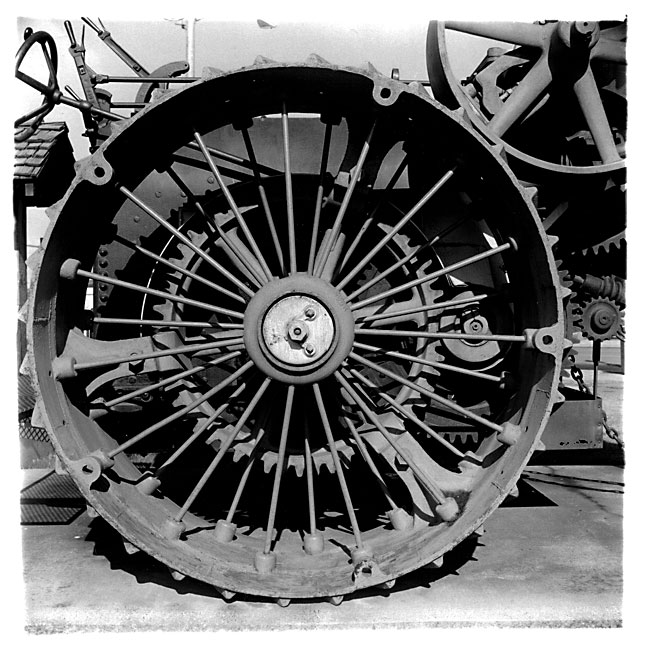
This first shot of an old steam traction wheel is full frame just to
show all the corners. The
rest of the shots here have had some cropping. Hey, I like
square, but not for every shot
and every subject. Apologies to Diane Arbus, wherever she may
be.
I don't ever print sloppy borders for display, either. This is a
mess. I have a homemade
neg carrier for this enlarger in 6x6, and accidentally put it in upside
down, which shows
the cut marks in the mat board it's made from. I didn't realize
it 'til I was done printing.
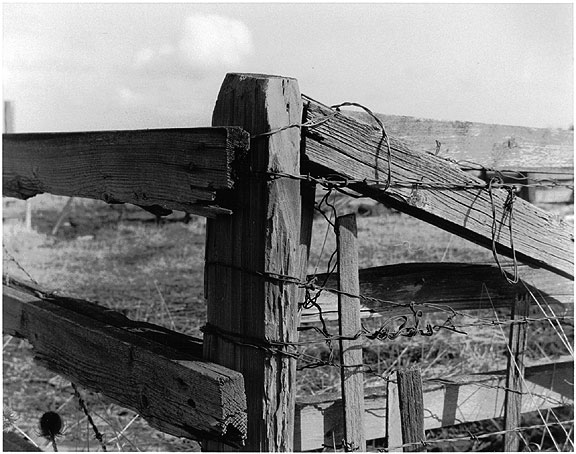
A corner post at an old loading chute on the prairie. I like wood.

This is the chute itself. This is the only shot that is not hand
held. The camera
is resting on the corner post in the above shot. I set the focus
at 50 feet. The twigs
that are out of focus were only about 6 feet away.
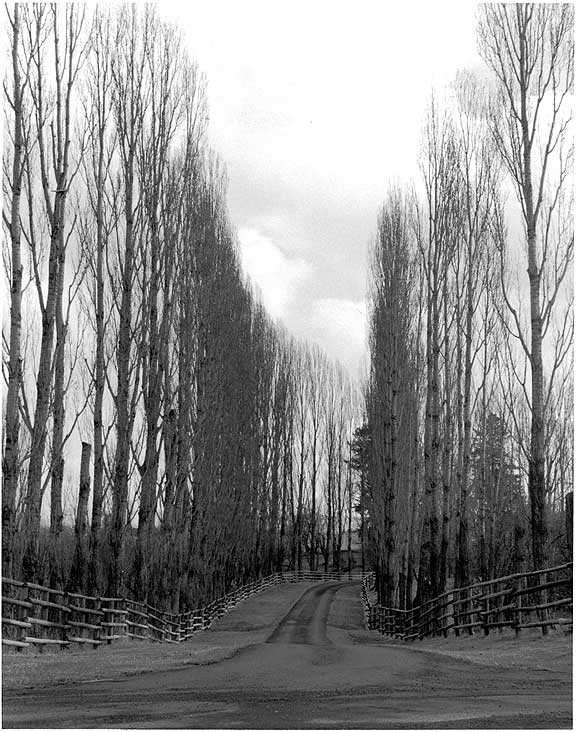
Poplar tree lined driveway. Not a bud in sight. Not yet,
anyway. In a couple of
months it'll be a different story, though. This is definitely a
color shot in the summer.
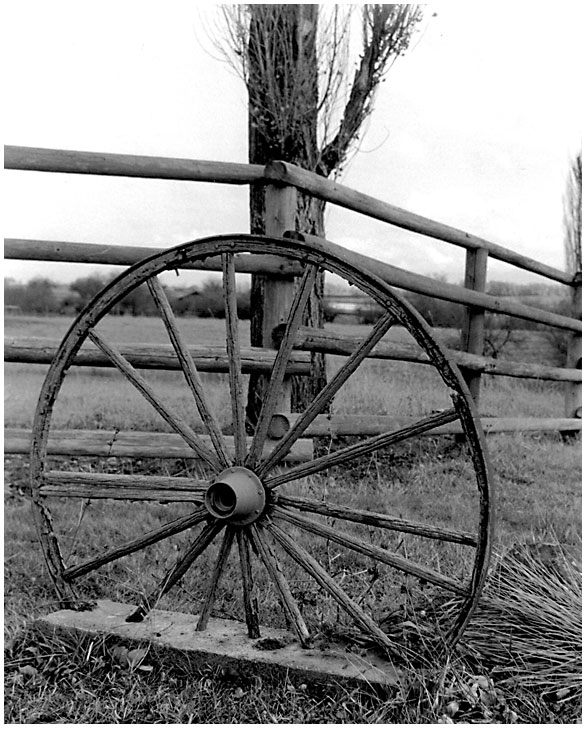
I wonder how many miles this old wagon wheel has traveled across the
prairie.
Now it's a quiet reminder of how things used to be. I think it's
beautiful.
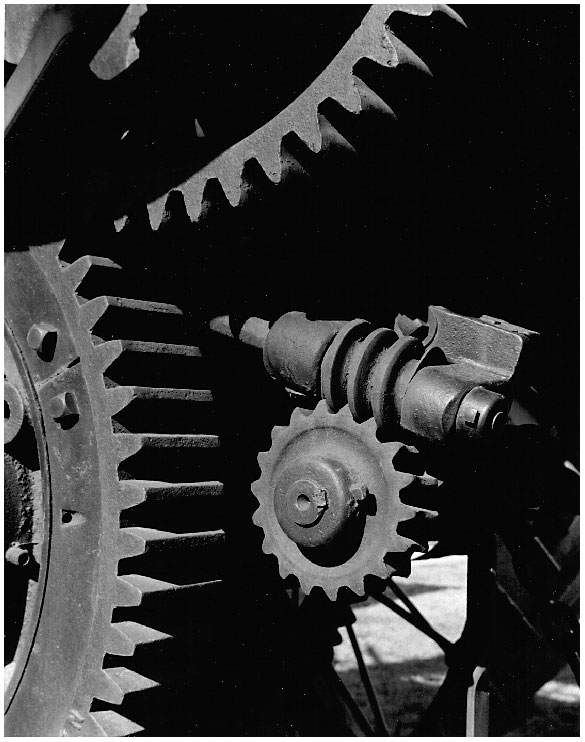
The bull and drive gears along with the steering worm and pinion from
the traction
engine in the first photo. These things were amazing. No
gasoline. No diesel. All
you needed to make it run were the most basic materials: Wood and
water.
If you had a dead tree and an old watering trough, you were in business.
Thanks for having a look.
deansphotographica.com
deanw@bmi.net














